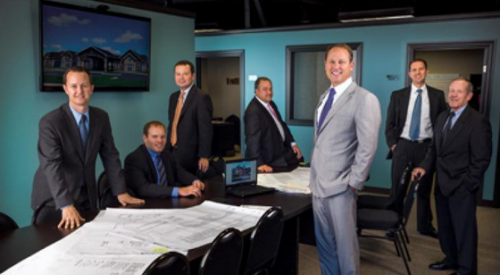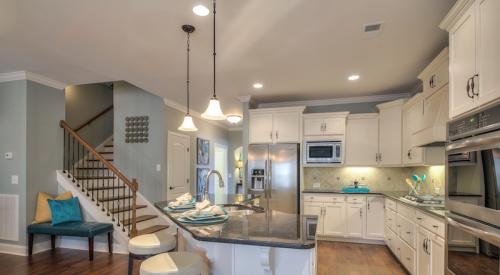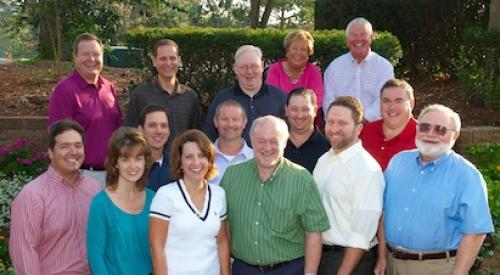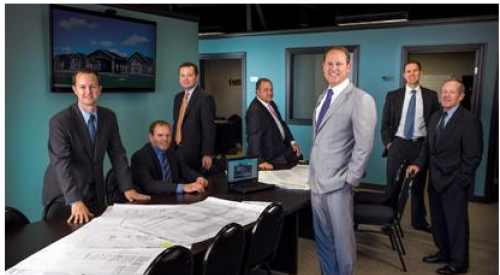For most companies, achieving 100 percent customer satisfaction by any metric would be cause for celebration. Slap that accomplishment on postcards, posters, business cards, and websites. Tell every potential customer that walks through the door. Advertise it to every market. Broadcast it on Twitter, Facebook, YouTube, and LinkedIn. But for the leadership team at Gallatin, Tenn.-based Goodall Homes, reaching this epic milestone only spurred the group to ask: How can we do better?
It was late 2008, and Goodall Homes had just received a perfect score on its third-party willingness-to-refer customer survey. Each and every one of its fourth-quarter survey respondents that year said, yes, they would recommend the builder to a family member, friend, or colleague — a first for the 28-year-old home-building company.
“When the results came in, the entire company met as a team and we started talking about customer satisfaction and what it means,” says Keith Porterfield, the company’s COO. “In the end, it all came down to the fact that we didn’t just want our customers to be satisfied, we wanted them to actively promote us. We wanted raving fans.”
Porterfield, of course, is referring to the best-selling business book, Raving Fans: A Revolutionary Approach to Customer Service, which has become one of the company’s sources of inspiration during the downturn. At a time when the Nashville housing market is off 50 percent from its peak, Goodall has put all its focus on creating a customer experience that is second to none in its marketplace, and special enough to create a raving fan base.
Goodall Homes
Gallatin, Tenn.
Bronze Award
Established: 1983
No. of homes built in 2010: 167
Markets served: 1
Notable benchmarks
• Open-book management — Goodall reviews its operational results each week, including financial statements and gross margins, and rewards strong financial performance through the use of “Great Game of Business Bonuses,” which are tied to the pre-tax profitability of the company.
• Net Promoter Score — The company adopted the NPS system in 2009 to better track the levels of satisfaction among not only its buyers, but also its trade partners.
• Trade partner council — Goodall established a trade partner council with nine key trade partners to improve the overall quality of its homes and the building process.
• Results — The ongoing pursuit of creating “raving fans” has contributed to a record-setting year in 2010, with 2011 on pace to surpass previous sales and profit records.
“As a team, we felt that we didn’t have a tremendous amount of control on the amount of traffic coming in, the state of the economy, etc.,” says Goodall CFO Rich Pankow. “There was a consensus that the one thing we could control and do very well — good market or bad — was a strong focus on customer service. It became the companywide directive.”
It is this customer-centric focus that has helped Goodall Homes grow and capture market share during these challenging times. Since 2006, the company has grown to become the fifth largest builder in its market, and 2010 marked the firm’s best year in its history, with 181 net sales and 169 closings — up 23 percent and 21 percent, respectively, from the previous year. It is also a primary reason for Goodall being named a National Housing Quality Bronze Award winner from Professional Builder and the NAHB Research Center.
How to Create Customers Who Are Raving Fans
Goodall Homes’ blueprint for creating raving fans starts with its ability to measure the level of satisfaction among its customers. To help dig deeper in this area, the company adopted the Net Promoter Score (NPS) approach to customer surveying, a technique used by some of the world’s largest companies, including GE and Proctor & Gamble. NPS asks customers to rank their likelihood to recommend on a scale of zero to 10 (with 10 being most likely) — versus just “yes” or “no.”
Survey respondents that answer nine or 10 are called “promoters” and are considered by Goodall to be raving fans. Customers that select seven or eight are “passives,” and those that answer six or below are “detractors.” The total number of detractors is subtracted from the number of promoters to calculate the NPS. (Goodall’s NPS has held steady in the 70-percent range for more than two years, putting the builder on par with some of the nation’s best-known customer-focused companies, like Southwest Airlines and Enterprise Rent-A-Car.)
“If a bunch of people are standing around the water cooler at work and the subject of a new home comes up, we want our customers to brag about how they bought a Goodall Home and it was one of the best experiences they’ve ever had,” says Porterfield. “These are the people answering nine or 10 on the survey. Over the years, we have observed that as the Net Promoter Score increases in any particular community, the sales in the same community seem to follow.”
Another key component is having a system of processes for analyzing and acting on survey results in a timely fashion. For Goodall, which adopted an open-book management style in 2007, this is a companywide effort that encompasses five distinct processes:
- Completed customer surveys are emailed to all employees directly from the third-party survey provider (GuildQuality) so that everyone in the organization knows how the company is doing.
- Customer surveys are formally reviewed by the COO and VP of sales and marketing every Monday morning, followed by private meetings with employees to resolve any related issues.
- Positive comments from surveys are read to the entire staff at the weekly company meeting. This practice reinforces key customer service qualities such as communication, friendliness of staff, and making the customer feel important.
- Net Promoter Scores are posted on a white board in the training room.
- All customer comments are compiled each quarter and trends are delineated. The goal is to make three improvements each quarter based on customer feedback. For example, if feedback suggests that additional storage is required in one of the plans, the design team will quickly adjust the plans.
- The final key component to creating a raving fan base is setting reasonable expectations and maintaining an open dialogue with the customers throughout the entire buying, building, and closing processes, says Chris O’Neal, VP of sales and marketing.
“When you are dealing with customer service, if you have a bad experience it tends to come back to one of those two things: either you set up poor expectations or you miscommunicated something,” says O’Neal. “Once we write a contract, the sales rep and the project manager get together once a week and they contact their backlog and give them updates. It’s an opportunity for the customer to ask any questions and talk about the progress. It helps to ease the mind of the customer. We extended these meetings to 30 days past closing just to make sure everything is going well for them.”













